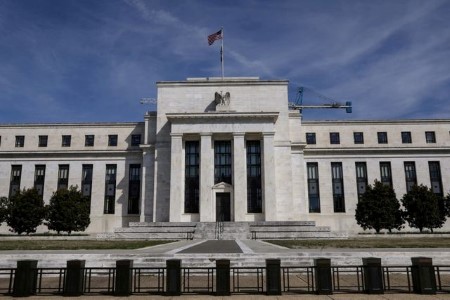




Philippines Trade Update: Trade trajectories trend along
 DOWNLOAD
DOWNLOAD

Policy Rate Updates: Double cut finale
 DOWNLOAD
DOWNLOAD

Monthly Economic Update: One for the road
 DOWNLOAD
DOWNLOAD


Profit or pivot? Funds blink on hawkish Fed bets

ORLANDO, Fla., Sept 12 (Reuters) – Hedge funds have slashed their record wager on rising US interest rates by a quarter, but it remains to be seen whether this marks a turning point in their hawkish Fed outlook.
If the moves in US rate futures markets in the last few days are any guide – the Fed’s implied terminal rate rose to almost 4% – the wider trading community still believes the Fed will continue front-loading rate hikes until it feels confident that inflation is firmly headed back toward target.
The latest Commodity Futures Trading Commission report for the week to Sept. 6 shows that speculators and leveraged accounts cut their net short position in three-month ‘SOFR’ rate futures by 255,583 contracts to 808,229 contracts.
That was a record weekly move, from a record net short of 1.06 million contracts the week before.
A short position is essentially a wager that an asset’s price will fall, and a long position is a bet it will rise. In bonds and rates, yields fall when prices rise, and move up when prices fall.
If that was a profit-taking exercise, it makes sense. Funds had substantially increased their net short position in Secured Overnight Financing Rate futures for 10 straight weeks, during which time implied rates across the 2023 curve rose by around 85-100 basis points.
If it was intended to front run the Fed’s eventual pivot to a less aggressive policy stance and possible rate cut or cuts next year, however, it might be premature.
A raft of Federal Reserve officials last week hammered home the message that the tightening will continue, and markets are now pricing in a near 90% probability of a third consecutive 75 bps rate hike later this month.
“We need to act now, forthrightly, strongly as we have been doing, and we need to keep at it until the job is done,” Powell said on Thursday.
Implied SOFR rates spiked higher. The implied rate on the March 2023 contract, which traders think will mark the fed funds peak, closed the week just shy of 4%, the highest since June.
Funds have not completely changed their view, of course, and they increased their net short position in short-dated Treasuries futures.
The latest CFTC report show they increased their net short position in two-year Treasuries to 326,742 contracts from 281,600 contracts. That is now the biggest bearish bet on two-year bonds since April last year.
Funds have added to that short position for seven consecutive weeks, the longest streak in four years. If funds increase that wager for another week, it will be the longest stretch of increasingly bearish bets since 2013.
This continues to be a money-spinning trade – the two-year yield rose on Friday to a 15-year high of 3.5750% – and shorting bonds has been a winner for macro funds this year.
Hedge fund industry data provider HFR’s Macro Index rose 1.6% in August and is up 9.3% so far this year. HFR’s broader Composite Index is down 4% year-to-date.
(The opinions expressed here are those of the author, Jamie McGeever, a columnist for Reuters.)
This article originally appeared on reuters.com





 By Reuters
By Reuters